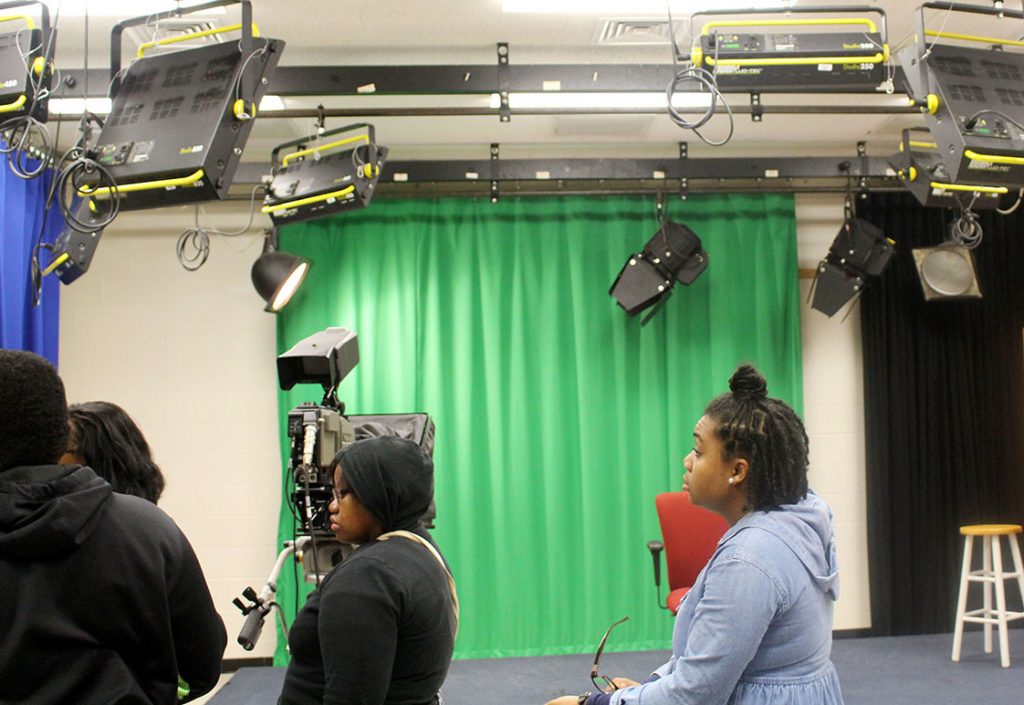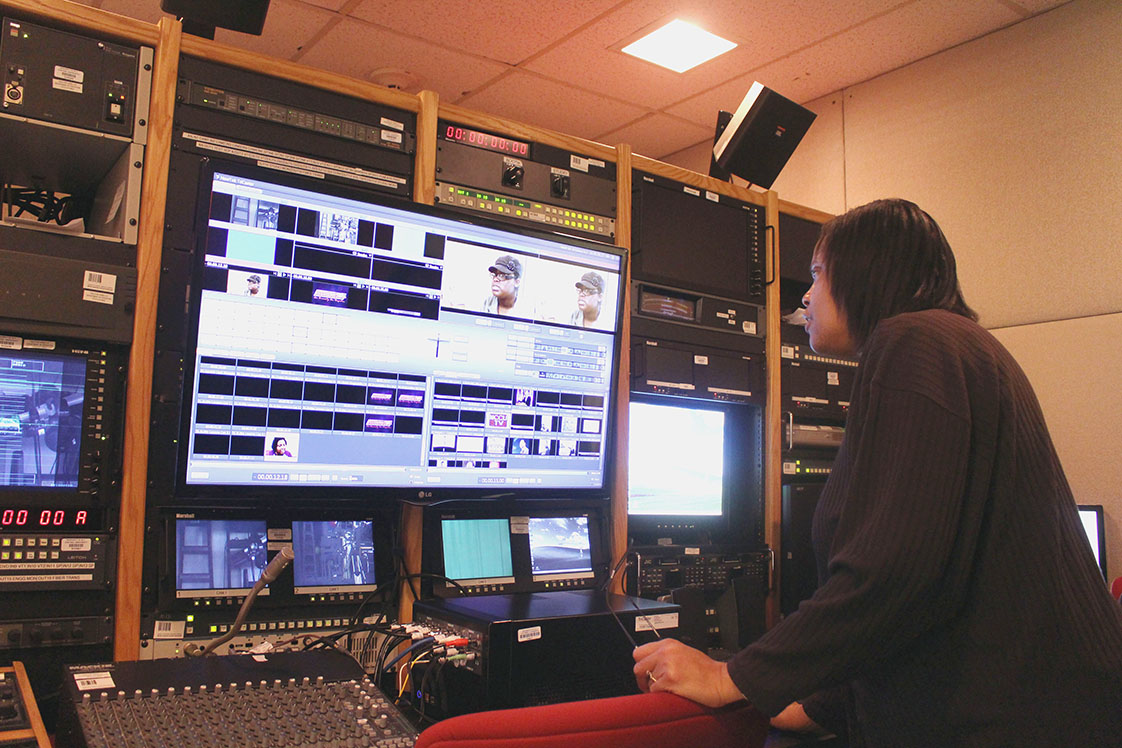
Making television productions is not cheap. Felecia Casey-Hicks, NCCU TV studio manager, told the PYO interns about the expense of working in the television business and also how studios can hold more than $100,000 worth of equipment. (Staff photos by PYO interns)
The Durham VOICE interns from Partners for Youth Opportunity decided to visit NCCU’s TV Studio to learn more other types of media. The TV Studio is located on the first floor of the Farrison–Newton Communications building on campus. Felecia Casey–Hicks, the NCCU TV Studio manager, showed the staff the basics of putting on a production. The VOICE interns spent the afternoon learning about lighting, camera, action, audio, and other important features of behind-the-scenes production.
Casey-Hicks worked many years with WTVD ABC 11 eyewitness news. And she has been the TV Studio manager for many more years. NCCU’s Studio hosts productions for Durham such as ‘CityLife’ that keeps citizens up-to-date on Durham issues. Along with professionals from the City of Durham, NCCU Mass Communication students are TV Studio crew for ‘CityLife.’ The TV Studio also produces several NCCU related productions.
https://www.youtube.com/channel/UCNOsrYpkzxSo-GsF6-qYySw
There are three main parts to the NCCU TV Studio. For example there is the control room (the brains of the operation), then there is the filming section which holds the stages, green screen and cameras, and the editing suite which is were all the editing happens.
Casey–Hicks showed the Durham VOICE interns how each aspect of the studio relates to the production. She taught us about how to exactly run the cameras, about editing and lighting, and about the fancy equipment like TriCasters and teleprompters–all very important in making sure that the production is running smoothly. Whether it’s print news, radio, television, or Twitter — we learned that media has multiple ways to reach the audience.
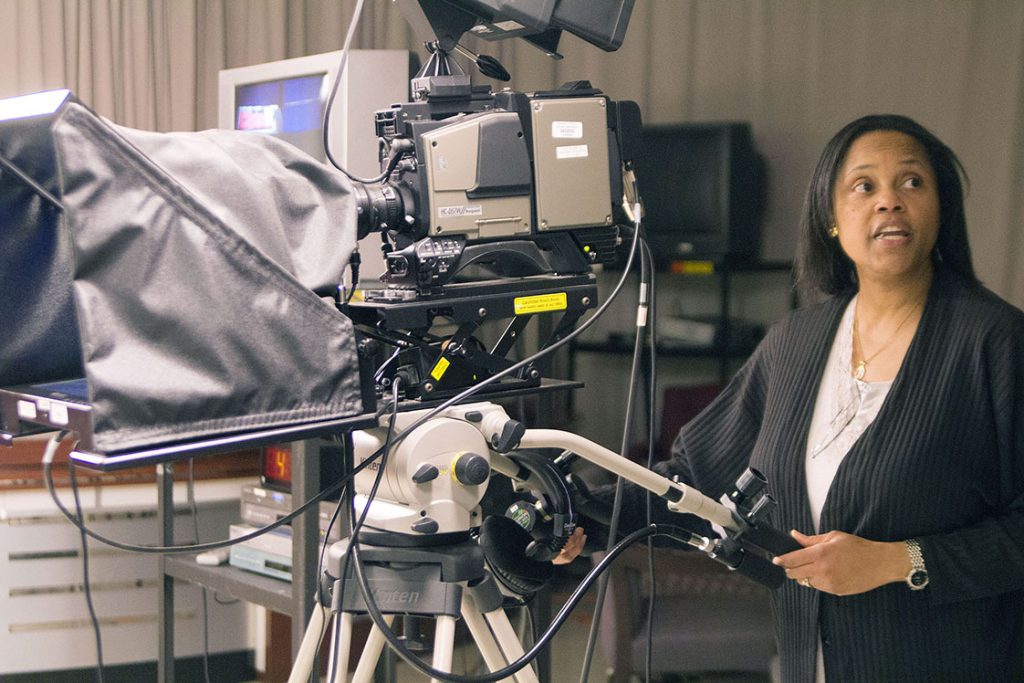
Felecia Casey-Hicks, NCCU TV studio manager, shows the PYO interns how to frame a subject in a camera shot. There are three main cameras in the studio –cameras 1, 2 and 3 – all of which shoot from different vantage points. (Staff photos by PYO Interns Christian Lawrence and Bruce Wilkerson)
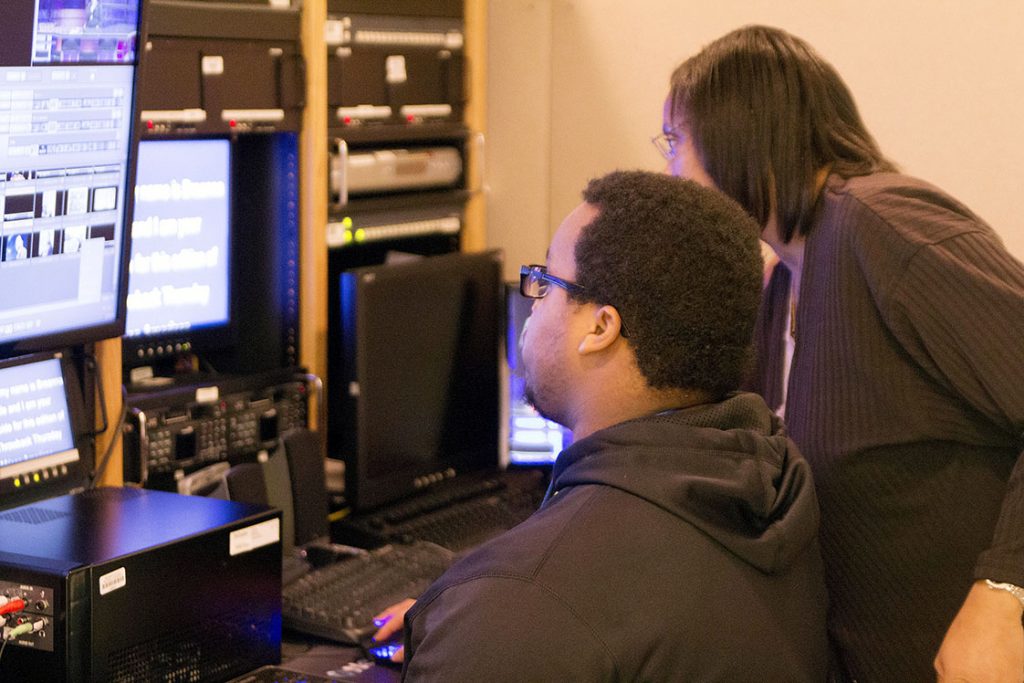
Casey–Hicks shows Yusuf Shah how to work the production equipment. Here she shows him how to apply text on the screen monitor and how to pull up and switch camera angles.
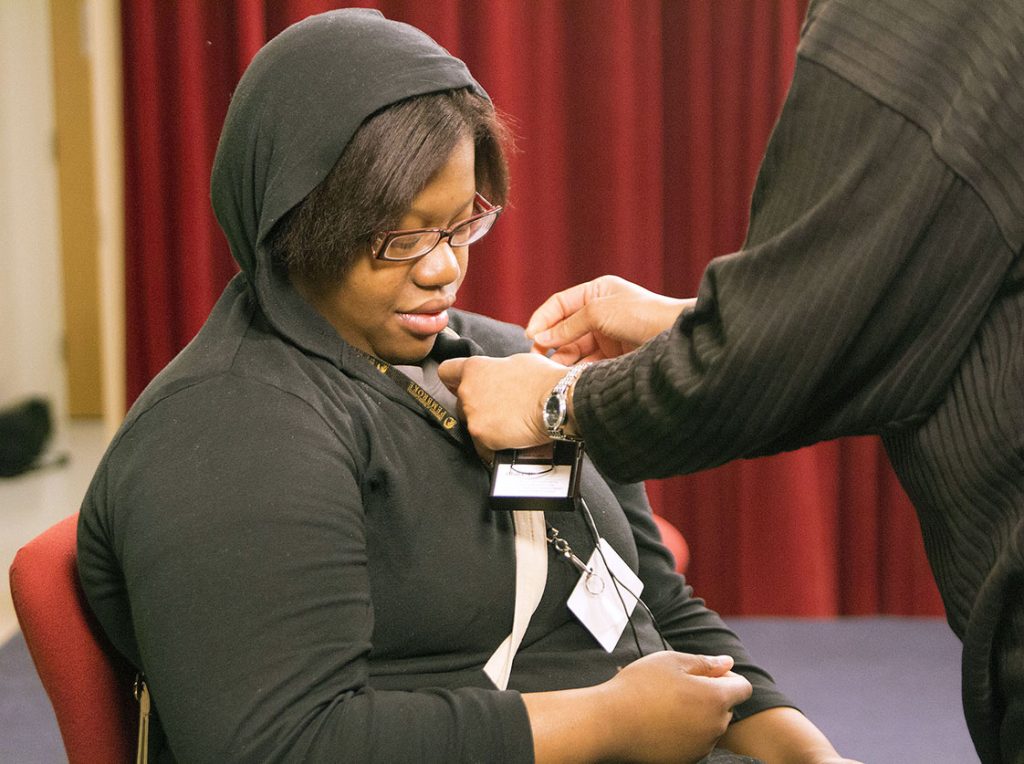
In this look behind the scenes, Casey-Hicks assists Christian Lawrence with putting on a microphone. Anyone going on camera has to go through this process.

